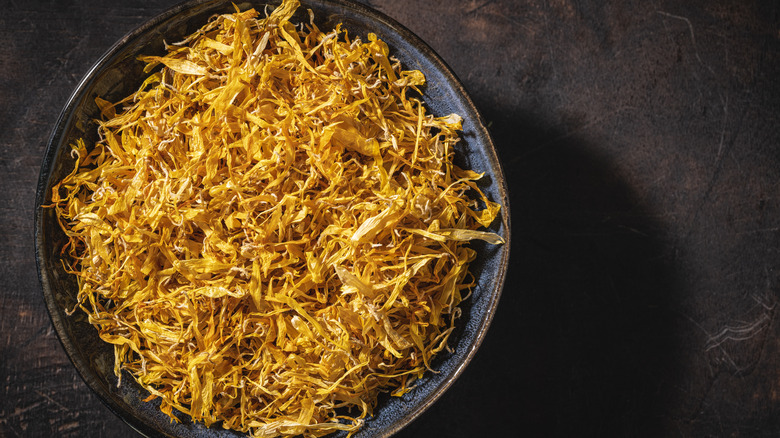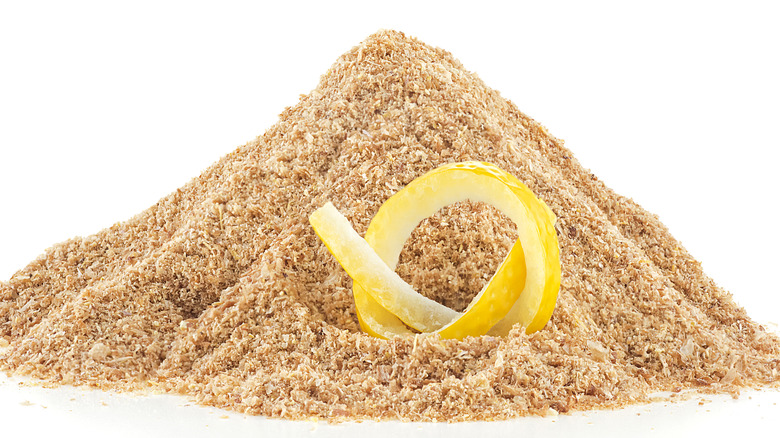What To Consider When Swapping Fresh Lemon Zest With Dried Peels
Acid is one of the important elements of cooking. A drop of tangy vinegar in salad dressing, a squeeze of lime over a taco, a quick zest of lemon to elevate a marinade — it all sounds great until you realize you forgot to buy a lemon in the store. It happens to the best of us, but there's an easy backup solution: dried lemon peel, which is commonly found in the spice section and can last up to two years in the cupboard. Swapping dried lemon peel for fresh zest is simple, but there are some things to consider.
The first thing to note is that dried lemon peel is much more concentrated than fresh, which means you'll need a lot less of it. Chefs typically recommend using about one-third of the amount called for when substituting dried peel for fresh zest. For example, if a recipe needs one tablespoon of fresh lemon zest, use one teaspoon of dried peel. This is important not only to avoid the dish becoming too intense but also bitter. When testing out a new ingredient for the first time, it's always a good idea to start small and taste as you go to ensure you like the flavor.
Amplifying flavor
While concentrated, dried lemon peel won't add the same vibrancy to a dish as fresh lemon. As a solution, some suggest soaking the dried peel in water for about 15 minutes before using it to extract its full flavor. Other cooks like to rub the dried peel between their fingers to release the oils before adding. Another trick is to pulse the lemon peels with sugar, which is done primarily with fresh peels when baking.
Most are in agreement that when a recipe calls for a large amount of zest, it's a better idea to run to the store. Fresh lemon can completely change a recipe and chefs like to add it to everything from pancake batters to pasta dishes. Try to buy one whenever you do your grocery shopping and maximize its shelf life with these easy tips. However, in a pinch, dried zest should do just fine and it's even preferred in many perfect cocktail recipes.

